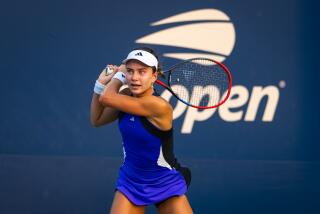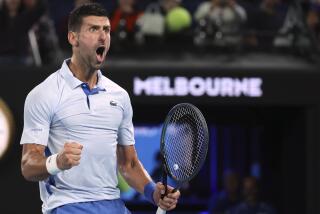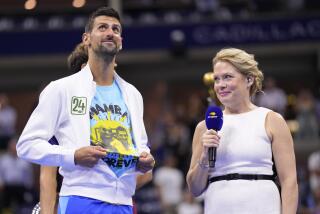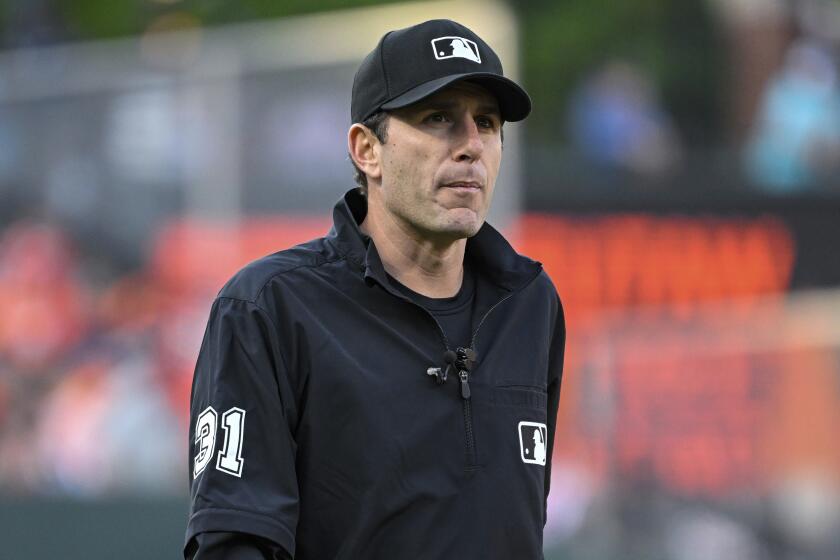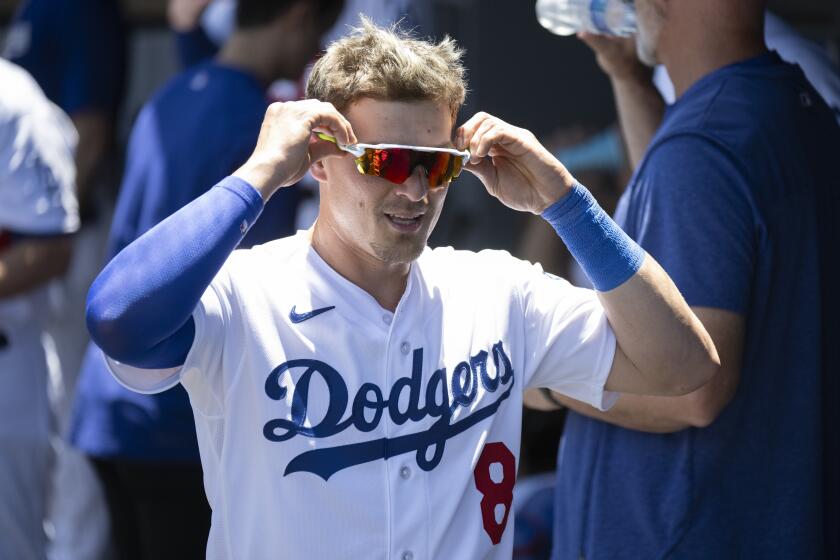Major moves by little country
- Share via
PARIS — A French Open globally celebrated for what it might be already shines for what it is within a southeast European country roughly the size of South Carolina.
While string-heads far and wide gab that it might stage another Federer-vs.-Nadal tete-a-tete (still possible), and some have begun to notice that it might mark a third straight Grand Slam final involving Maria Sharapova (still possible), many of the 10 million people of Serbia already have their definition.
It’s a gem.
“Just phenomenal for such a small country,” said Novak Djokovic, and as he reached his first Grand Slam men’s semifinal, so deepened the phenomenon.
Djokovic’s tricky if surprisingly brisk win Wednesday over Russia’s Igor Andreev, 6-3, 6-3, 6-3, helped leave eight singles semifinalists.
But of those eight, one hails from Belgium (Justine Henin), one from Spain (Rafael Nadal), one from Switzerland (Roger Federer), two from Russia (Nikolay Davydenko and Maria Sharapova) and three from little Serbia (Djokovic, Jelena Jankovic and Ana Ivanovic).
“Especially in tennis, no tennis tradition, you know,” Djokovic said, and especially after “a lot of difficulties and problems in a country the last 15, 20 years.”
A chunk of the former Yugoslavia, Serbia sits landlocked, surrounded by Albania, Bosnia & Herzegovina, Bulgaria, Croatia, Hungary, Macedonia, Montenegro and Romania.
Sports-wise, the world might know it from the Serbia & Montenegro World Cup team whose defense got an up-close view of Argentina’s revered 26-pass goal at Germany 2006.
World-wise, the world knew Serbia from footage of NATO bombs falling on Belgrade in 1998, or from news in 2006 that the former president Slobodan Milosevic had died in prison in The Hague while still on trial for crimes against humanity.
Paris-wise, the world might refer to Serbia as the current king of the world.
Even if a country actually sought an athletic spokesman, it probably couldn’t do any better than Djokovic, 20. Not only does he stand third to Nadal and Federer in points this year, but he’s photogenic and personable, teasing reporters as they filed into the news conference Wednesday with, “Now, now you are coming. Where were you the first week?”
Djokovic’s famous yellow shirts and his cheering section wearing the same trumped just about everything else for verve on a dull Wednesday, with the possible exception of actor Antonio Banderas wearing black in the sun and fanning himself while watching one Spaniard from Mallorca, Nadal, crush another, Carlos Moya, the 1998 champion.
That match clunked by, 6-4, 6-3, 6-0, and sent minds forward toward Nadal-Djokovic, a head-to-head that stands 3-1 in favor of Nadal, with Djokovic winning on a hardcourt in Key Biscayne, Fla., in route to his biggest title to date.
He has helped see to it that the same Belgrade photographed beneath bombs already has sent four children born there to these semifinals, if you count Nenad Zimonjic in the men’s doubles here.
How?
“There is really no exact answer for your question,” Djokovic said. “I cannot explain why all these tennis players in the men’s and women’s tennis came up together at the top of the world at the same time. Because, you know, Jelena Jankovic was practicing in the United States” -- at the Bolletteiri Tennis Academy in Florida -- “ ... and Ivanovic in Switzerland. I was practicing since I was 12 in Germany, Italy.... We didn’t have any system in our country that can bring us up and help us in our careers.”
Ivanovic is 19, Djokovic just turned 20 and threw a party in Belgrade, and Jankovic hit 22 in February -- with Jankovic and Djokovic the busiest risers on their respective tours.
Jankovic gains notice for a highly curious on-court habit -- smiling, a lot -- and gives news conferences that brim with good humor, much like Djokovic’s.
Said Ivanovic, rather against historic odds, “Yeah, we are very happy people.”
More to Read
Go beyond the scoreboard
Get the latest on L.A.'s teams in the daily Sports Report newsletter.
You may occasionally receive promotional content from the Los Angeles Times.
